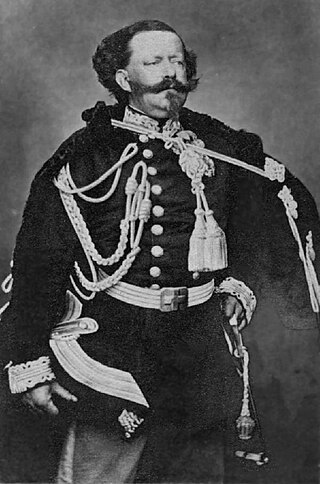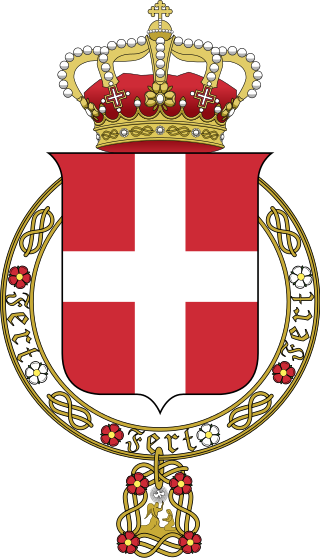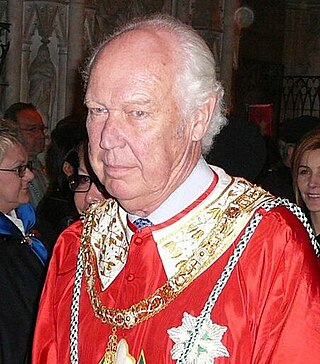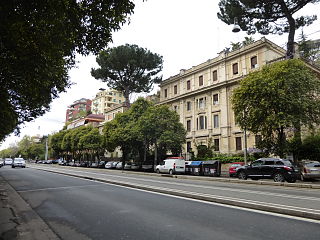
Victor Emmanuel II was King of Sardinia from 23 March 1849 until 17 March 1861, when he assumed the title of King of Italy and became the first king of an independent, united Italy since the 6th century, a title he held until his death in 1878. Borrowing from the old Latin title Pater Patriae of the Roman emperors, the Italians gave him the epithet of Father of the Fatherland.

Victor Emmanuel III, born Vittorio Emanuele Ferdinando Maria Gennaro di Savoia, was King of Italy from 29 July 1900 until his abdication on 9 May 1946. A member of the House of Savoy, he also reigned as Emperor of Ethiopia (1936–41) and King of the Albanians (1939–43) following the Italian invasions of Ethiopia and Albania. During his reign of nearly 46 years, which began after the assassination of his father Umberto I, the Kingdom of Italy became involved in two world wars. His reign also encompassed the birth, rise, and fall of the Fascist regime in Italy.

The House of Savoy is an Italian royal house that was established in 1003 in the historical Savoy region. Through gradual expansions the family grew in power, first ruling a small Alpine county northwest of Italy and later gaining absolute rule of the Kingdom of Sicily. During the years 1713 to 1720, they were handed the island of Sardinia and would exercise direct rule from then onward.

Prince Vittorio Emanuele of Savoy, Prince of Naples, was the only son of Umberto II, the last King of Italy, and Marie-José of Belgium. Vittorio Emanuele also used the title Duke of Savoy and claimed the headship of the House of Savoy. These claims were disputed by supporters of his third cousin, Prince Amedeo, Duke of Aosta, and later by Amedeo's son, Aimone.

Margherita of Savoy was Queen of Italy by marriage to her first cousin King Umberto I of Italy. She was the daughter of Prince Ferdinand of Savoy, Duke of Genoa and Princess Elisabeth of Saxony, and the mother of the King Victor Emmanuel III of Italy.

The Villa Doria Pamphili is a seventeenth-century villa with what is today the largest landscaped public park in Rome, Italy. It is located in the quarter of Monteverde, on the Gianicolo, just outside the Porta San Pancrazio in the ancient walls of Rome where the ancient road of the Via Aurelia commences.

Emanuele Filiberto Umberto Reza Ciro René Maria di Savoia is a member of the House of Savoy. He is the son of Vittorio Emanuele of Savoy and only male-line grandson of Umberto II, the last King of Italy. In 2024, Emanuele Filiberto became one of two claimants to the headship of the House of Savoy after the death of his father.

Elena of Montenegro was Queen of Italy from 29 July 1900 until 9 May 1946 as the wife of King Victor Emmanuel III. As Victor Emmanuel's wife, she briefly claimed the titles Empress of Ethiopia and Queen of the Albanians; both titles were dropped when her husband formally renounced them in 1943. Elena was the daughter of King Nicholas I and Queen Milena of Montenegro. With the opening of the case for her canonization, she was made Servant of God by the Catholic Church in 2001.

Vittoria Cristina Adelaide Chiara Maria di Savoia is the daughter and heir apparent to Emanuele Filiberto of Savoy, Prince of Venice, who is a claimant to the headship of the House of Savoy.

Rosa Vercellana, 1st Countess of Mirafiori and Fontanafredda, commonly known as 'Rosina' and, in Piedmontese, as La Bela Rosin, was the mistress and later wife of Victor Emmanuel II, King of Italy. Despite this, the morganatic status of her marriage meant that she was never recognized as Queen of Italy.

Palazzo Margherita, formerly Palazzo Piombino, is a palazzo on Via Veneto in Rome. The usual name references Queen Margherita of Savoy, who lived there from 1900 to 1926.

Maurice of Savoy was an Italian nobleman, politician and cardinal. He was the fourth son of Charles Emmanuel I, Duke of Savoy and Infanta Catalina Micaela of Spain.

The Royal Villa is a historical building in Monza, Northern Italy. It lies on the banks of the Lambro river, surrounded by the large Monza Park, one of the largest enclosed parks in Europe.

Umberto I was King of Italy from 9 January 1878 until his assassination in 1900. His reign saw Italy's expansion into the Horn of Africa, as well as the creation of the Triple Alliance among Italy, Germany and Austria-Hungary.

Louis Victor of Savoy, 4th Prince of Carignano headed a cadet branch of the Italian dynasty which reigned over the Kingdom of Sardinia, being known as the Prince of Carignano from 1741 till his death. Upon extinction of the senior line of the family, his great-grandson succeeded to the royal throne as King Charles Albert of Sardinia, while his great-great-grandson, Victor Emmanuel II, became King of Italy.

Maria Anna of Savoy was a Princess of Savoy by birth and Duchess of Chablais by her marriage to her uncle, Prince Benedetto, Duke of Chablais.

Princess Leopoldina of Savoy was a Princess of Savoy and later the Princess of Melfi, as wife of Giovanni Andrea VI Doria-Pamphilj-Landi, (13) Prince of Melfi. She was the older sister of the princesse de Lamballe.

Gianicolense is the 12th quartiere of Rome (Italy), identified by the initials Q. XII. It belongs to the Municipio XI and Municipio XII. It takes its name from the Janiculum hill, which lies in the nearby rione Trastevere and whose western extremities correspond to the area of Monteverde.

Giorgio Carlo Calvi, Count of Bergolo was an Italian general during World War II and the husband of Princess Yolanda of Savoy, the eldest daughter of King Victor Emmanuel III.
























